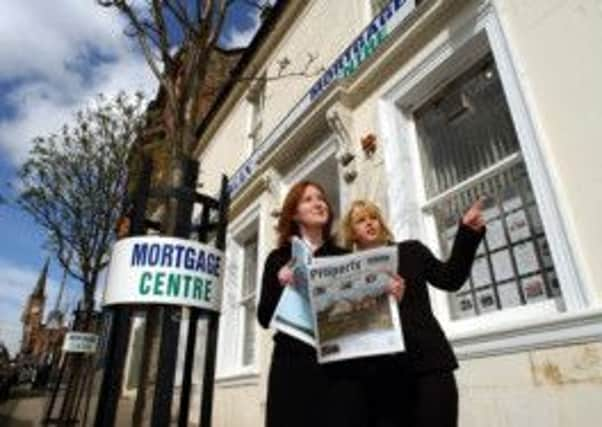Bill Jamieson: Consumers put their house in order


A Is this not just another fragile upturn fuelled by yet more consumer debt – one that will end, as previous debt bubbles have done, in a shattering and painful bust?
Bank of England figures last year showed that household debt has reached a record level. Individuals now owe a total of £1.43 trillion, including mortgage debt, topping the previous record set in September 2008, just before the financial crisis halted the borrowing binge.
Advertisement
Hide AdAdvertisement
Hide AdWhat else but ever more debt could be fuelling the evident upturn in consumer spending and confidence? We have heard much about the plight of the “squeezed middle”. The Office for National Statistics has sought to measure the discomfort: real wages, it finds, have been dropping by 2.2 per cent annually since early 2010. The Institute for Fiscal Studies suggests that a mid-range household’s income between 2013 and 2014 was 6 per cent below its pre-crisis peak.
Although falling incomes had come to an end, the average household, it warned, would not see its income recover before the next election.
Game, set and match, surely, for the “debt bubble” pessimists? Not quite. When we look at the detail behind the headline figures, we see we are not resorting to more debt in the way that we did. Households are reducing their debt exposure – “deleveraging” in the jargon. And the rocket fuel of housing equity withdrawal that drove the spending binge for much of the decade before the financial crisis has not just dried up but has been reversed.
Figures from the Bank of England last week showed unsecured lending to consumers slowed slightly in December. Unsecured consumer credit amounted to £602 million in the month, compared with £708m in November and £628m in October. And these levels are sharply down from the 2013 high of £1.1 billion recorded in September.
Net borrowing on credit cards dipped to an eight-month low of £135m in December from £300m in November. However, the net increase in other loans and advances moved up to £467m in December from £408m in November.
While the decline in unsecured lending is modest, it hardly suggests the runaway borrowing boom of some fevered imaginations. Indeed, the main reaction to the figures was concern over whether this decline would dampen consumer spending growth in the months ahead.
And there is an intriguing trend in mortgage debt. Throughout the 1990s and for most of the period from 2002 to 2007, consumer spending was driven by substantial extra “top-up” mortgage lending by households – using the increased value of their homes to take out an extra mortgage for home improvement and refurbishment. The official name for this was “housing equity withdrawal”.
But this has gone dramatically into reverse. Far from housing equity withdrawal, there is now household net equity injection. In December, the Bank of England reported net housing equity injection of £10.4bn in the third quarter – the 22nd successive such injection.
Advertisement
Hide AdAdvertisement
Hide AdThe cumulative net injection of equity into houses has now reached £215.8bn since the second quarter of 2008.
The Bank of England has added a note of caution: that the switch to housing equity injection may reflect the lower number of housing transactions.
Global Insight economist Howard Archer says: “Very low mortgage interest rates, the fact that house prices in some regions remain below their 2007 peak levels and an ongoing need for many people to improve their personal finances suggests that there will continue to be a significant net injection of housing equity for some time to come.”
As for the rebound in mortgage lending, house sales and prices, Citigroup economist Michael Saunders reminds us that this comes from abnormally depressed conditions “and is not yet, in our view, in bubble territory”.
The number of mortgage approvals (72,000 in December) is only a little above the 1990-92 recession low, well below the pre-crisis norm (average for 1987-2006 was 98,000 a month) and far below the extremes of 2006 (average of 119,000 a month).
Are mortgage borrowers overstretched? The median ratio of mortgage interest payments to income among first-time buyers, at 11.3 per cent, is the lowest since April 2003.
Overall personal borrowing growth remains modest, at just 1.3 per cent year-on-year in December, while overall credit growth for households and non-financial businesses is just 0.8 per cent year-on-year.
The household debt/income ratio fell to 138 per cent in the third quarter of last year, the lowest since 2003, down on 142 per cent a year earlier and sharply lower than the peak of 170 per cent in early 2008. We are in a safer place.
Advertisement
Hide AdAdvertisement
Hide AdMeanwhile, the balance of commentary on the outcome of this week’s meeting of the MPC suggests no change in interest rates. Bank governor Mark Carney has also signalled that rates would remain at 0.5 per cent for the foreseeable future.
Were there to be any robust evidence that the recovery is being fuelled by an unsustainable rise in household debt, the Bank would be sending an altogether different signal by now. «